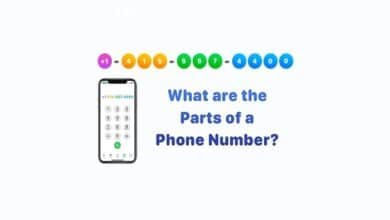Mastering Self Introduction in English for Students: A Complete Guide

When it comes to making a strong first impression, especially in academic settings, a self introduction in English for students is an essential skill to master. Whether you’re introducing yourself in a classroom, during an interview, or at a social event, how you present yourself can leave a lasting impact. This guide will take you through everything you need to know about crafting an effective self introduction in English, with examples, tips, and strategies to help you feel confident and prepared.
Why Is a Self Introduction in English for Students Important?
A self introduction in English for students is a critical communication skill that can help you stand out and connect with others in educational and social contexts. The ability to introduce yourself effectively can set the tone for future interactions, allowing you to build rapport with classmates, professors, or potential employers. It is also often one of the first things you’ll be asked to do in many academic environments, such as during the first day of class, at a seminar, or even at a student club meeting.
By mastering this skill, you not only present yourself in a positive light but also increase your chances of networking and forming meaningful connections with others. A well-crafted self introduction also demonstrates your ability to communicate clearly and confidently in English, which is especially important for students studying in a foreign language.
Essential Components of a Self Introduction in English for Students
Creating an impactful self introduction in English for students requires including key information in a concise and engaging manner. These components will help you structure your introduction:
-
Greeting: Start by greeting your audience in a friendly and polite manner. Common greetings include “Hello,” “Hi,” or “Good morning.”
-
Name: Clearly state your full name or the name you’d prefer to be addressed by. You can say, “My name is [Your Name].”
-
Age (Optional): Depending on the context, you might want to mention your age. For example, “I am [Your Age] years old.” This is particularly common when introducing yourself in a more personal or informal setting.
-
Hometown or Background: Share where you’re from. This could include your city, country, or region, and it helps others connect with you. You might say, “I’m from [City/Country].”
-
Educational Background or Major: This is a key element for a self introduction in English for students. Mention what you study and where, such as, “I am currently studying [Subject] at [University].”
-
Hobbies and Interests: Including a brief mention of your hobbies can make your introduction more engaging and relatable. For example, “I enjoy reading, playing sports, and traveling.”
-
Why You Are There or What You Hope to Achieve: End your introduction by explaining why you’re there and what you’re looking forward to, like, “I’m excited to be here because I want to learn more about [Topic] and meet new people.”
How to Write a Self Introduction in English for Students
Writing a self introduction in English for students might seem challenging at first, but with a few simple steps, you can craft a compelling and professional introduction. Here’s how:
-
Start with a Greeting and Your Name: The first step is to greet your audience and introduce yourself. Be sure to speak clearly and with confidence. If you’re in a formal setting, a simple “Good morning” followed by “My name is [Your Name]” is a good start.
-
Introduce Your Background and Education: After stating your name, mention where you’re from and what you’re studying. This provides context for your audience and lets them know what brings you to the environment.
-
Talk About Your Hobbies and Interests: Adding a personal touch by sharing your hobbies and interests helps the audience relate to you. It shows you’re more than just a student and gives others something in common to talk about.
-
State Your Purpose or Goals: Conclude your self introduction by mentioning what you hope to achieve in the context of the introduction. Whether you are introducing yourself at a new class, during a networking event, or at a seminar, expressing your enthusiasm and goals is always a great way to leave a positive impression.
Example of a Self Introduction in English for Students
Now that we’ve covered the essential components of a self introduction in English for students, let’s look at a practical example of what this might look like:
“Good morning! My name is Sarah Johnson. I am 20 years old, and I’m from New York City. Currently, I am studying Business Administration at XYZ University. In my free time, I love reading books, especially mystery novels, and I also enjoy hiking and traveling. I’m really excited to be here today because I hope to learn more about leadership and teamwork, and I look forward to meeting all of you!”
As you can see, this introduction includes all the key components: greeting, name, background, educational information, hobbies, and purpose. It’s friendly, clear, and engaging.
Common Mistakes to Avoid in a Self Introduction in English for Students
While crafting a self introduction in English for students, it’s important to avoid certain common mistakes that can detract from your message. Here are a few pitfalls to watch out for:
-
Being Too Brief or Vague: While brevity is important, a self introduction should include enough information to help the listener or reader understand who you are. Avoid leaving out essential details like your name, background, or interests.
-
Overloading with Information: On the other hand, providing too much information in a self introduction can overwhelm your audience. Keep it concise, focusing only on the most relevant details.
-
Lack of Confidence: When you’re speaking in front of others, it’s crucial to deliver your self introduction confidently. Avoid mumbling or speaking too fast. Take a deep breath, smile, and speak clearly.
-
Not Tailoring to the Audience: The content of your self introduction should vary depending on the context. A self introduction at a formal event will differ from one at a social gathering. Be mindful of your audience.
-
Using Informal Language in Formal Settings: When introducing yourself in professional or academic settings, avoid using slang or overly casual language. Opt for more formal vocabulary instead.
Tips for Improving Your Self Introduction in English for Students
To further improve your self introduction in English for students, here are some helpful tips:
-
Practice Speaking: The more you practice, the more natural your introduction will sound. Rehearse in front of a mirror, record yourself, or practice with a friend.
-
Use Simple Language: Keep your language clear and easy to understand. Avoid overly complex sentences or jargon that might confuse your audience.
-
Focus on Body Language: When introducing yourself in person, your body language plays a big role. Maintain good posture, make eye contact, and smile to convey confidence and approachability.
-
Adapt to the Situation: If you’re introducing yourself in a formal setting, such as a classroom or job interview, keep your introduction more professional. For informal settings, such as a social gathering, feel free to be more casual and lighthearted.
-
Stay Engaged with Your Audience: After your self introduction, take a moment to engage with your audience. Ask questions or make a comment that invites conversation. This will make you seem more approachable and help build connections.
The Role of Self Introduction in Academic and Professional Settings
A self introduction in English for students plays a significant role in both academic and professional settings. Whether you’re in a classroom, presenting at a seminar, or interviewing for an internship, your introduction is often the first opportunity to make a positive impression. Here are some ways a self introduction is crucial:
-
Building Relationships: A strong self introduction can help you establish rapport with professors, peers, and potential colleagues, setting the foundation for future interactions.
-
Showcasing Your Communication Skills: A well-delivered self introduction demonstrates your ability to communicate effectively, a crucial skill in both academia and the workplace.
-
Networking Opportunities: In professional environments, your self introduction may lead to valuable networking opportunities. It’s your chance to highlight your background and goals, which can attract like-minded individuals or mentors.
-
Boosting Confidence: A confident self introduction can also boost your own self-esteem. By practicing and presenting yourself clearly, you affirm your sense of identity and purpose.
Conclusion
In conclusion, crafting a self introduction in English for students is more than just a formality—it’s an opportunity to present yourself to the world in a confident and engaging manner. Whether you’re addressing a classroom, a networking event, or an interview panel, a well-structured introduction can leave a positive and lasting impression. By focusing on clarity, confidence, and relevance, you can master this essential skill and open doors to new opportunities in both academic and professional settings.
FAQs
1. What should I include in my self introduction in English for students?
Your self introduction should include your name, age (optional), where you’re from, what you study, your hobbies, and what you hope to achieve.
2. How can I practice my self introduction?
Practice by recording yourself, rehearsing in front of a mirror, or asking a friend to give you feedback. The more you practice, the more confident you will become.
3. Should I mention my age in my self introduction?
Including your age is optional. If it’s relevant to the context or if you’re asked, you can mention it, but it’s not always necessary.
4. How long should my self introduction be?
A self introduction should be brief—aim for about 30 seconds to 1 minute, depending on the situation. Focus on key details without overwhelming your audience.
5. How can I make my self introduction stand out?
To make your self introduction stand out, be confident, use clear language, and include a unique personal detail or passion that sparks interest in your audience.





